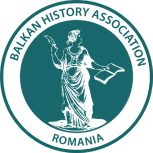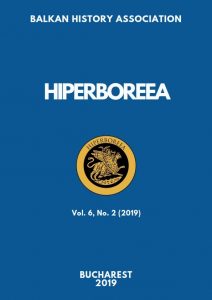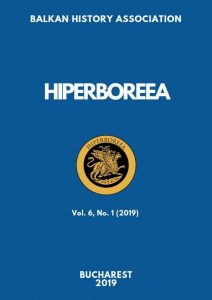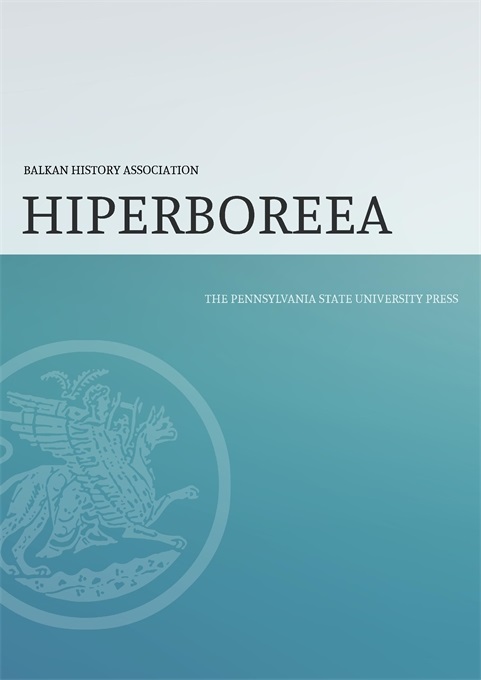Home » News (Page 2)
Category Archives: News
Alexios G. C. Savvides, Bosphorus/Bosporos (Boghaz-içi) from Byzantine to Latin and Ottoman Times (4th-15th centuries). Constantinople Viewed from the North-East Water Currents… (Athens: Herodotus, 2020) by Susan Sorek

This work explores in depth the story of the Bosphorus straits area, its history, geography, and topography, in remarkable detail. The area which encompasses the Black Sea with the Sea of Mamarra, was an area that commanded the crossing of two great trades routes in history. It marked the divide between Europe and Asia and is the narrowest navigable channel in the world. It was of strategic as well as economic importance from antique times until the present, and of necessity became a focal point for aggression and conquest from many disparate nations in its long history. The decisive factor was the geographical and strategic position of Constantinople lying in the northern apex of the triangle which included the rich coastline of the eastern Mediterranean.
The first 41 pages deal with relevant quotations, bibliographical and cartographical notes, abbreviations used, and the forward. Here Savvides sets out his agenda which is to concentrate on the history, geography, and topographical context of the Bosphorus.
The work commences with an outline of the Byzantine period, tracing the political and economic role of the area in the Roman and Byzantine world, where Constantinople became a focal point at the heart of the straits. Byzantium, the imperial city may be compared to that of an irregular triangle which occupied the strategic point along the straits, thereby making it a focus for many raids and invasions.
However, although the straits economic importance throughout the Middle Ages has been significantly stressed the Bosphorean role in the transport of food supplies from the north had diminished even before Byzantine Constantinople was selected as the Roman Empire’s new centre of gravity. It was the commencement of eleven and half centuries of Byzantine rule, which was plagued by various incursions including the first raids by the Visigoths in the 3rd/4th centuries and the Muslim invasion of the 7th century. This would be followed by a series of other incursions including the threat from Russia. Eleven and a half centuries of Byzantine rule saw a multitude of incursions, from 10th century onwards Venice, the newly emerging economic centre received concessions in Byzantium and from 12th/13th centuries the Genoese received commercial concessions also. The straits were busy with a variety of different trading countries and so, naturally encouraged more raiding. Maritime trade had opened up considerably because of favourable treaties. However, the area also played a highly symbolic and ideological role as the epicentre of eastern Christianity in the late Roman and Byzantine period.
This was a turbulent period, with power changing hands a multitude of times. Savvides takes us through the period step by step in a concise, yet clear manner and it becomes obvious of the importance of the Straits in the making of the historical context of the period.
Finally in 1253 Constantinople fell to the Ottoman Turks, the Latin Empire of Baldwin II had exiled Constantinople on the other side of the Bosphorus, after the Crusader invasions of the 11th/12th centuries. Chapter 3 deals with the Ottoman conquest. As the scholar K.M Setton said that this was an inevitability, which brought about the end of an era. In 1452 Ottoman fortresses were built on either side of the straits along the narrowest part of the channel, a channel that had first been ‘conquered’ by the Persian ruler Darius by use of a bridge of boats, almost two thousand years earlier. The Ottomans used the strategic importance of the Bosphorus to expand their regional ambitions and to wrest control of the entire Black Sea area, which they regarded as an Ottoman Lake, as they took control of the two straits. The local inhabitants were extremely alarmed and regarded this invasion which they associated with the advent of the coming of the anti-Christ, and many tried to leave, it was a time of huge disruption. The final chapter 4 is the epilogue which reviews the importance of the straits during the Ottoman empire.
The final part of the work contains the summary, with maps and index. The maps give an added benefit to understanding the changes that occurred throughout the period and in total the work comprises 217 pages.
This is an outstanding book, which clearly shows the importance of the Bosphorus straits throughout history, and a chronicle of it as an economic metropolis which laid the firm foundation of Constantinople. Savvides sets out his agenda clearly at the start and follows it through in a detailed, yet highly readable manner. He manages to explain with clarity some of the more complicated periods of history, for example the period of Heraclius I and II in the 7th century. Always at the heart of the discussion is the role of the Bosphorus in dictating historical events.
The work fills an especially important niche in the research of this significant area throughout history which still resonates in modern times.
Susan Sorek, PhD, Department for Continuing Education, University of Oxford
Luca Zavagno, The Byzantine City from Heraclius to the Fourth Crusade, 610–1204. Urban Life after Antiquity (Cham: Palgrave, 2021) by Alexandru Madgearu
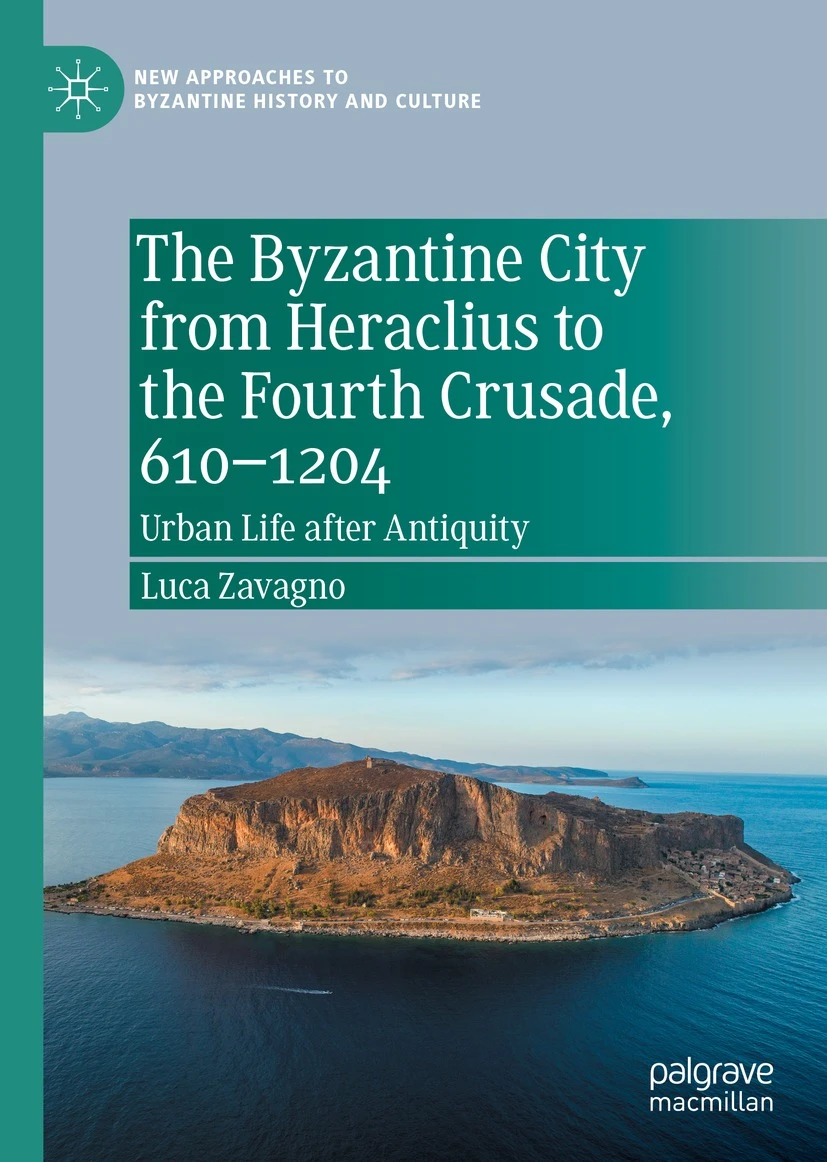
Over the last two decades, the old conception of the Classical civilization’s decline in the Mediterranean area has become more and more replaced with a different vision that could be summarized as “The Transformation of the Roman World” (which is the title of a series of books that produced substantial contributions to the study of the period between 3rd and 7th centuries). Luca Zavagno, who has already published in the past decade some preliminary studies on the topic at hand, presents us with another work that fits within the existing paradigm of Classical studies, as applied to the evolution of urban life in the eastern part of the Mediterranean.
In the first chapter (“The Byzantine City: A Symphony in Three Movements”) the author lays out the methodological framework for the study of the different transformations of the landscape and functions and structure of the Byzantine cities in Asia Minor, in the islands and in continental Greece. He insists on the definition of the “Byzantine city” as a multifunctional settlement, whose evolution was influenced by the dynamic relations between its social composition and the urban structures. For instance, it was observed that the urban functions were often dispersed in different places (in Epirus, the bishoprics were located in settlements with a hybrid character, between rural and urban). The fluctuating use of the public and private functions of the urban space traced by the archaeological research in different cities attests to the survival of urban life, and contradicts the idea of the constant crisis which would have followed the beginning of the 7th century.
The second chapter (“The Historiography of Byzantine City: Interpretations, Methodology, and Sources”) is a detailed survey of the debates on the fate of urban life between 7th and 13th centuries in the Mediterranean space. The now prevailing opinion contradicts the idea of a decline specific to that period, by including it in a larger perspective of a longue durée of adaptations determined by interactions between the central and local administration, the Church, the hinterland of the cities and the macro-economy of the whole Mediterranean area, in which the Byzantine cities were interconnected. The development from one type of urbanism (Roman) to another one (the early Byzantine) was shaped by the exchange systems of the entire Mediterranean scale, in the same way as the Italian merchant city-states. This process was not a decline, but a transformation, evidenced by the archaeological research which attests to the development of the artisanal and commercial activities in cities like Corinth, Thebes, Monembasia or Athens.
A particular problem is the significance of the names applied to the Byzantine cities, such as polis and kastron. The presence of bishoprics was defining for a polis even if the settlement was in decline, while kastron (used after the 7th century) was specific to any fortified administrative or military center. The presence of a bishop or of churches with relics of patron saints enabled the resilience and development of urban life. They gave spiritual protection to the cities whose strong walls, built in many cases with recycled stones, and not always erected in response to attacks, attest to the need for security for the new kind of urban community. Some data about city life was provided by hagiographies, but the progress of the archaeological research offers now a different view than that proposed by Aleksander Kazhdan in 1954, namely of the decline and revival of the cities in the framework of a feudal system.
The decreasing number of coins is not a testament to collapse, but a lesser need for cash in the new type of settlements and for the new type of military organization, as was demonstrated by Michael Hendy. On the contrary, the study of Byzantine pottery production reveals a flourishing economy, integrated in the Mediterranean space, which contradicts the catastrophic vision supported, for instance, by Clive Foss. Currently, extensive excavations and the refining of ceramics studies are providing a better understanding of the Early Byzantine urban economy. The survival of urban life was enabled by the coastal position which gave to those cities the opportunities to belong to what could be called a Byzantine koine. The development of the urban centers was also stimulated by the presence of the archontes, the local aristocrats, who founded churches, monasteries and other buildings. Their need for various goods determined the growth of trade and artisanal activities in the cities. The Italian city states had a certain influence in this evolution.
In Chapter 3 (“Urbanism in the Byzantine Heartland and the Coastal/Insular koine”),the evolution of urban life in three regions, Anatolia, the Aegean heartland, and the islands or other littoral places, is discussed according to the available literary sources and archaeological excavations. In Anatolia, one of the best researched cities is Amorium, whose importance as theme residence increased after the middle of the 7th century in relation to the needs of defense against Arab attacks. The upper part of the city, soon rebuilt after the siege of 838, remained an important military and economic center until the expansion of the Seljuqs.
Another city from Anatolia, Ancyra, also illustrates the resilience of urban life after the grave Arab attack of 838, while at Amastris the development benefitted from shipping connections. Other Anatolian cities that preserved a high level of urban life were Nicaea, Ephesos and Attaleia. In the Aegean heartland, Thessalonike is impressive for its strong fortification system (several times repaired after earthquakes), but also for the flourishing economic life ensured by the harbor and by the influx of pilgrims. The prosperity increased when peaceful relations were established with the northern Bulgarian neighbors, for whom this city was a marketplace.
Second to Thessalonike in importance, Corinth was a terrestrial and maritime crossroad as well, whose prosperity was preserved during the early and middle Byzantine period, especially as a production center. On a lesser level, Athens and Thebes resisted as administrative and ecclesiastic centers, where the manufacturing activity is documented by the literary sources and archaeological discoveries.
A special case is Monembasia, founded in the 7th century as a refuge place. Its position ensured an important place on the maritime route between west and east, with commercial and military significance. The last section of the chapter presents several cities from the islands of Crete (Gortyn, Eleutherna), Cyprus (Salamis), Sicily (Syracuse, Catania, Palermo) and Sardinia (Cagliari), as well as from the Dalmatian coast (Butrint, Dyrrachium) and Crimea (Cherson). They belonged to what the author calls the “koine of the other sea”, a fragmented periphery of the Byzantine space, which remained more or less under the domination of the empire. The fragmentation of the maritime routes after the 7th century and the frequent Arab raids affected somewhat the economic life of these cities ruled by archontes or by strategoi, but the urban features survived, including artisanal activity (pottery, metal working, constructions).
The general conclusions (chapter 4) summarizes the considerations in regard to the resilience of urban life evidenced by archaeological research even for the worst period of the Byzantine Empire (7th-9th centuries). The reason for the survival of the artisanal and building activity was the presence of the secular and ecclesiastic elites in these cities.
As a general statement, it could be concluded that Luca Zavagno’s book provides a comprehensive critical overview of the research conducted on early Byzantine urban life, as can be seen from the large bibliographies annexed to each chapter. It is obvious that the author was able to manage a large amount of data from differrent regions of the Byzantine area and use them to demonstrate his approach to the problem of the continuity of urban life.
Alexandru Madgearu, PhD, Senior Researcher at the Institute for Defence Studies and Military History in Bucharest, Romania
František Šístek (ed.), Imagining Bosnian Muslims in Central Europe: Representations, Transfers and Exchanges (New York and Oxford: Berghahn, 2021) by Stojanka Lužija
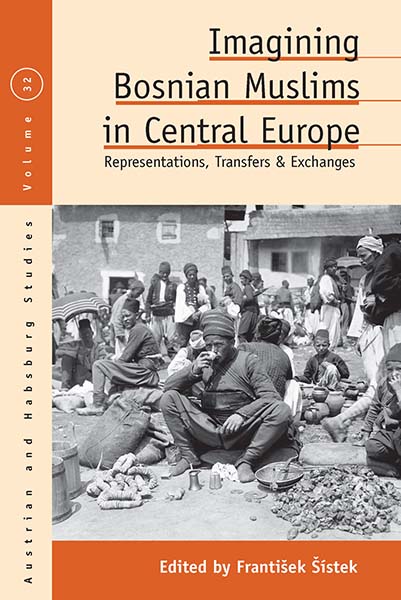
Imagining Bosnian Muslims in Central Europe. Representations, Transfers and Exchanges is a result of a project led by Fratišek Šístek and Peter Hladký. According to the editors, the purpose of the book is to point out “contacts, transfers and exchanges between people of Central Europe and Muslims of Bosnia and Herzegovina”, and also to monitor the development of the national identity of Bosnian Muslims. Therefore, the book can be divided into two parts. The first part follows past Central European relation towards Muslims. The second part deals with the period after the World War II, аnd it covers a wider range of topics from the official recognition of the national identity of Bosnian Muslims to contemporary perceptions of their identity in the diaspora.
Aside from the Introduction and Conclusion the book is comprised of thirteen chapters. Beginning with the introduction, “The Turkish Threat’ and Early Modern Central Europe: Czech Reflections,” authors Ladislav Hladký and Petr Stehlík explore the change in perception of the Turkish threat in the “Lands of the Bohemian Crown”. Their section consists of two thematic units. In the first unit, the authors examine the financial and military contribution to the “Lands of the Bohemian Crown” in the Habsburg defense against the Turks. While in the second part they point to the transformation of the “Turkish threat” in the period between the 16th and 18th centuries. The authors conclude that over time, the Czech struggle with the Turks was regarded in the collective memory as a relic of some ancient heroic past.
The next chapter, “The Muslims of Bosnia and Herzegovina between Millet and Nation,” by Božidar Jezernik, follows the development of national identity among Bosnian Muslims through the different periods and reigns, from the Ottoman era through the Austro-Hungary to the Kingdom of Yugoslavia. The author points out the overlap of religious and national identity and also discusses the pressure on Muslims to accept “Serbian or Croatian national identity.” Jezernik also made a mistake stating that 1453 was the year of publication for the Ahdname to the Franciscans, instead 1463 (43 pp).
In the third chapter, “Ambivalent Perceptions: Austria-Hungary, Bosnian Muslims and the Occupation Campaign in Bosnia and Herzegovina (1878)” Martin Gabriel writes about the perceptions of public opinion in Austro-Hungary expressed through newspapers, but also in memoirs from the participants in the occupation. For example, as the Muslims were presented as “savages” (pp. 68), it was a response to the armed resistance to the occupation, but also had a foothold in the collective memory of the Austro-Ottoman wars of earlier times.
Clemens Ruthner’s chapter, “Sleeping Beauty’s Awakening: Habsburg Colonialism in Bosnia and Herzegovina, 1878-1918,” considers the extent to which the colonial paradigm is applicable to the example of Bosnia and Herzegovina. The author’s dilemma is how to evaluate 40 years of Austro-Hungarian administrations, whether “in terms of civilizational mission or within the paradigm of European colonialism”? (pp. 80). He concludes that the Austro-Hungarian administration in Bosnia and Herzegovina can be characterized as “Quasi colonialism” (pp. 86).
In his chapter, “The Portrayal of Muslims in the Austro-Hungarians Primary School Textbooks for Bosnia and Herzegovina,” Oliver Pejić emphasizes Interconfessional education as an important lever of Austro-Hungary’s self-proclaimed civilizing mission. Accorded to the administration, textbooks were supposed to play a double role, in the creation of the collective identity of Bosnian Muslims, and also in the emergence of loyal subjects to the monarchy.
In the following chapter, “Towards Secularity: Autonomy and Modernization of Bosnian Islamic Institutions under Austro-Hungarian Administration,” Zora Hesová focuses on the formation of autonomous Bosnian Islamic institutions whose foundations were laid during the Austro-Hungarian administration and whose heritage is still visible in the modern era. The formation of an Islamic religious community independent of Istanbul was a necessity in political terms as well. She emphasizes the importance of the 1909 Statute, concluding that Austro-Hungary “had a direct” and “formative and long-lasting influence on the character of Bosnian Islamic institutions and practices” (pp. 118).
In “Under the Slavic Crescent: Representations of Bosnian Muslims in Czech Literature, Travelogues and Memoirs 1878-1918,”František Šístek, quotes authors who examined modernization in Bosnia and Herzegovina, as some even fantasized that Muslims would accept Catholicism – a “fantasy” that at the beginning of the 20th century gradually faded. The author concludes that in the period from the 1870s to 1918, there was a visible trend of positive representation and humanization of Muslims in Czech texts.
Author Charles Sabatos, in his chapter, “Divided Identities in the Bosnian Narratives of Vjenceslav Novak and Rebecca West,”compares Novak’s short story Maca (1881) and West’s travelogue in terms of different perceptions about Muslim identity. While Novak claims that Bosnian Muslims are not Turks and that they are Croatian brothers of Islamic faith, West claims that Bosnian Muslims are actually Serbs.
After World World II, Austro-nostalgia was revived. Bojan Baškar explores it in the example of Vera Stein Erlich as he discusses her private and public life, emphasizing her feelings of nostalgia for the Austro-Hungarian times. Regarding Muslims, Stein puts forward a bold theory, claiming that the culture and life of Bosnian Muslims was in fact a version of a larger oriental style and she placed the homeland in medieval Muslim Spain (pp. 162). In essence, the theory is incorrect, but according to Baškar, these are Stein’s attempts to connect Bosnia with her favorite area – Mexico (pp. 165).
Marija Mandić, in “The Serbian Proverb Poturica gori od Turčina (A Turk-Convert Is Worse Than a Turk): Stigmatizer and Figure of Speech,” relates the origin of the Proverb to the process of Islamization during the Ottoman Empire. According to the author, Proverb is used in the literal sense, but also in the figurative one. Its purpose is stigmatizing the legacy of the Ottoman Empire, but also the converts.
In the next chapter, “From Brothers to Others? Changing Images of Bosnian Muslims in (Post) -Yugoslav Slovenia,” Alenka Bartulović researches the perception about Bosnians and partly Bosnian Muslims in Slovenian society from the 1980s onward. She points out that Bosnians were first assumed as semi-rural and primitive people, and then Islamophobia and Balkanism emerged. Bartulović asserts that in the early 1990s Islam was set up as the most visible marker and the most obvious sign of the ethnic difference between Bosniaks and Slovenes.
Finally, the works of Aldina Čemernica and Merima Šehagićexplore the position of Bosnian Muslims in Germany. Čemernica deals with the issue of identity in the “Bosnian, European, Berliner” triangle among young Muslims of Bosnian descent (pp. 222). She claims that religion is a significant cohesion factor among Bosnian Muslims. On the same trail is Šehagić’s chapter about the attitude of Western society towards Bosnian Muslims. She concludes that they are understood as representatives of the European form of Islam, are considered white, and consequently they are accepted.
Ultimately, this book represents a significant venture in the study and development of the national identity of Bosnian Muslims, of the past relation between Central Europe and Austro-Hungary with Muslims of Bosnia and Herzegovina, as well as today’s Western perception toward them.
Stojanka Lužija, PhD, senior teaching assistant at the University of Banja Luka, Faculty of Philosophy, History Department.
Welcoming our newest Editorial Board members
Hiperboreea welcomes Ali Yaycıoğlu as a new Editorial Board member!
Ali Yaycıoğlu is Associate Professor of Ottoman and Middle East History at Stanford University and the Director of Center for Medieval and Early Modern Studies. He deals with the history of the Ottoman Empire and Modern Turkey. His research centers on economic, political and legal institutions and practices as well as social and cultural life in southeastern Europe and the Middle East during the Ottoman Empire. Ali Yaycıoğlu also has a research agenda on how people imagined, represented and recorded property, territory, and nature in early periods. He is the supervisor of a digital history project, Mapping Ottoman Epirus, housed in Stanford’s Center for Spatial and Textual Analysis (CESTA).
Welcoming our newest Advisory Board and Editorial Board members
Hiperboreea welcome Stelu Şerban, Donald Dyer, Alexandru Madgearu and Dušan Mlacović as a new Advisory Board and Editorial Board members!
Stelu Şerban is associate research fellow at the Institute for South East Europe Studies in Bucharest, Romanian Academy. Stelu’s research interests are related to anthropology, political sciences, social and environmental history in various interdisciplinary perspectives. He is member of the editorial board of Mnogoobrazie v edinstvoto (Sofia), and member of the Advisory Board of the International Association for Southeast European Anthropology.
Donald L. Dyer is Associate Dean for Faculty and Academic Affairs, College of Liberal Arts of the University of Mississippi (USA), and Distinguished Professor of Modern Languages. He is the Editor of Balkanistica, the journal of the Southeast European Studies Association, and the book series Romance Monographs, published by the Department of Modern Languages of the University of Mississippi. He is also a member of the Scientific Board of the Balkan History Association. His research and teaching interests include Balkan Slavic and Balkan Romance, Romanian, Russian and Bulgarian languages in Moldova, and language contacts in South-Eastern Europe.
Alexandru Madgearu is researcher at the Institute for Political Studies of Defence and Military History, Bucharest, Romania. He has published books and studies on the late ancient and early medieval history of Romania and South-Eastern Europe, including Byzantine Military Organization on the Danube, 10th-12th Centuries (Brill, 2013) and The Asanids: The Political and Military History of the Second Bulgarian Empire (1185-1280) (Brill, 2013).
Dušan Mlacović is assistant professor at the University of Ljubljana (Slovenia), Faculty of arts, Department of History. He deals with Slovene medieval history and social and economic history of the east Adriatic coast and Hinterland in the Middle Ages. In 2008, he published the monograph Plemstvo i otok: pad i uspon rapskoga plemstva [Nobility and the Island: The fall and rise of Rab’s nobility] (Slovenian ed. 2008; Italian ed. 2012). Since 2017 he is assistant to the editor-in-chief of Zgodovinski časopis (Historical Review), and since 2012 a member of the editorial board of Povijesni prilozi.
Welcoming our newest Advisory Board and Editorial Board members
Call for Papers Hiperboreea Journal: Vol. 6, No. 2 (December, 2019)
Call for Papers Hiperboreea
Vol. 6, No. 2 (December, 2019)
Important Dates:
Publication date: Late December, 2019
Last date for submission: August 1, 2019
Hiperboreea is an online academic journal published biannually by the Balkan History Association. The journal publishes articles in the field of History, written in English and occasionally French, and book reviews, or evaluations of scholarly conferences. Our focus is the study of Southeastern Europe, broadly defined as the states situated in the Balkan region.
Without limiting its scope a specific historical period or approach, the journal covers a wide range of topics, such as Cultural History, Political History, Military History, Social History, Economic History and Archaeology, and encourages work on any historical period and pluri-disciplinary background.
The following types of manuscripts are considered for publication:
– original articles in basic and applied research;
– critical reviews, surveys, opinions, commentaries and essays.
Starting from 2020, Hiperboreea will be published by the Pennsylvania State University Press (PSU Press). All manuscripts should be prepared according to PSU Press editorial policy (Author Guidelines).
Hiperboreea is one of the few Romanian journals that has built a solid presence in the online environment, being indexed in the following international databases and libraries:
ISI Web of Science (ESCI), EBSCO, Scopus, ERIH PLUS, Ulrich, ProQuest, ProQuest Philosophy Database, Index Copernicus, CEEOL, WorldCat, Regesta Imperii, J-Gate, International Bibliography of Humanism and the Renaissance, Bibliographical Information Base in Patristics, Modern Language Association International Bibliography, Romanian Academy Library, National Library of Australia, Oxford Library, Harvard Library, etc.
The editors will inform authors of the decision on their manuscripts within 1-2 weeks from submission. Starting with 2018, some changes in the editorial policy of Hiperboreea are implemented. Authors will be charged with a symbolic fee, for each article published, regular or special issues. Thus, charges will be applied to authors for the processing (not editing) and publication of manuscripts submitted to Hiperboreea and online hosting and archiving. The publication fee will be of 11 Euro (50 RON for Romania) per each article. Members of the Balkan History Association will be able to publish for free. All costs will be charged only upon the acceptance of their manuscripts for publication. After publication, each author will receive his article through e-mail as an electronic copy (pdf). All articles can be distributed by the authors for non-commercial purposes, only with the written permission of the Editorial Board. See more details in the section called ‘Submission’.
All articles submitted to our journal are reviewed following a double blind peer-review, which means that both the reviewer and author identities are concealed from the reviewers, and vice versa, throughout the review process. Our standards impose the existence of at least two reviewers per issue, although it is customary that many more peer-reviewers cooperate for individual issues.
To submit your papers, please mail them to: mihaidragnea2018@gmail.com
Sharing this call for papers would be welcomed and highly appreciated.
Looking forward to receiving your submission!
Dr. Mihai Dragnea, Editor-in-Chief
President of the Balkan History Association (BHA)
Call for Papers Hiperboreea: Vol. 7, No. 1 (June, 2020)
Call for Papers
Vol. 7, No. 1 (June, 2020)
Important Dates:
Publication date: Early June, 2020
Last date for submission: January 6, 2020
Hiperboreea is the official biannual journal of the Balkan History Association. It publishes articles in the field of History, written in English and occasionally French, and book reviews, or evaluations of scholarly conferences. Our focus is the study of Southeastern Europe, broadly defined as the states situated in the Balkan region. Without limiting its scope to a specific historical period or approach, the journal covers a wide range of topics, such as Cultural History, Political History, Military History, Social History, Economic History, and Archaeology, and encourages work on any historical period and with a multidisciplinary approach.
The following types of manuscripts are considered for publication:
– original articles in basic and applied research;
– critical reviews, surveys, opinions, commentaries and essays.
Starting from 2020, Hiperboreea will be published by the Pennsylvania State University Press (PSU Press). All manuscripts should be prepared according to PSU Press editorial policy (Author Guidelines) and submitted through the platform Editorial Manager. The editors will inform authors of the decision on their manuscripts within a few weeks from submission. All articles submitted to our journal are reviewed following a double blind peer-review, which means that the reviewer’s and author’s identities are concealed from each other throughout the review process. Our policy requires at least two reviewers per issue, although it is customary that many more reviewers cooperate on individual articles. Members of the Balkan History Association will receive printed and electronic copies by virtue of their membership. For non-member subscription prices, see the PSU Press website.
Hiperboreea is one of the few Romanian journals that has built a solid presence in the online environment, being indexed in the following international databases and libraries: ISI Web of Science (ESCI), EBSCO, Scopus, ERIH PLUS, Ulrich, ProQuest, ProQuest Philosophy Database, Index Copernicus, JSTOR, CEEOL, WorldCat, Regesta Imperii, J-Gate, International Bibliography of Humanism and the Renaissance, Bibliographical Information Base in Patristics, Modern Language Association International Bibliography, Romanian Academy Library, National Library of Australia, Oxford Library, Harvard Library, etc.
For further details, please email mihaidragnea2018@gmail.com
Sharing this call for papers would be welcomed and highly appreciated.
Looking forward to receiving your submission!
Mihai Dragnea, Editor-in-Chief
President of the Balkan History Association (BHA)
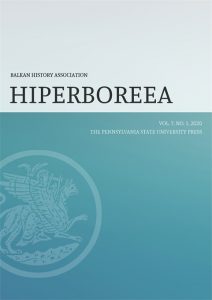
Call for Papers Hiperboreea Journal: Vol. 6, No. 1 (June, 2019)
Call for Papers Hiperboreea Journal
Vol. 6, No. 1 (June, 2019)
Important Dates:
Publication date: Late June, 2019
Last date for submission: May 1, 2019
Hiperboreea is an online academic journal published biannually by the Balkan History Association. The journal publishes articles in the field of History, written in English, and book reviews, or evaluations of scholarly conferences. Our focus is the study of Southeastern Europe, broadly defined as the states situated in the Balkan region.
Without limiting its scope a specific historical period or approach, the journal covers a wide range of topics, such as Cultural History, Political History, Military History, Social History, Economic History and Archaeology, and encourages work on any historical period and pluri-disciplinary background.
The following types of papers are considered for publication:
– original articles in basic and applied research;
– critical reviews, surveys, opinions, commentaries and essays.
Starting from 2020, Hiperboreea will be published by the Pennsylvania State University Press (PSU Press). All manuscripts should be prepared according to PSU Press editorial policy (Author Guidelines).
Hiperboreea is one of the few Romanian journals that has built a solid presence in the online environment, being indexed in the following international databases and libraries:
Web of Science database Emerging Sources Citation Index (ESCI), produced by the Institute for Scientific Information (ISI), now maintained by Clarivate Analytics (former Thomson Reuters), EBSCO, Index Copernicus, Scopus, Persee, ERIH PLUS, CEEOL, Ulrich, ProQuest East Europe, Central Europe Database, ProQuest Philosophy Database, WorldCat, International Bibliography of Humanism and the Renaissance (IBHR), Modern language Association International Bibliography, Bibliographical Information Base in Patristics (BIBP), Regesta Imperii, J-Gate, Romanian Academy Library, National Library of Australia, Oxford Bodleian Library, Harvard Library etc.
The editors will inform authors of the decision on their manuscripts within 1-2 weeks from submission. Starting with 2018, some changes in the editorial policy of Hiperboreea are implemented. Authors will be charged with a symbolic fee, for each article published, regular or special issues. Thus, charges will be applied to authors for the processing (not editing) and publication of manuscripts submitted to Hiperboreea and online hosting and archiving. The publication fee will be of 11 Euro (50 RON for Romania) per each article. Members of the Balkan History Association will be able to publish for free. All costs will be charged only upon the acceptance of their manuscripts for publication. After publication, each author will receive his article through e-mail as an electronic copy (pdf). All articles can be distributed by the authors for non-commercial purposes, only with the written permission of the Editorial Board. See more details in the section called ‘Submission’.
All articles submitted to our journal are reviewed following a double blind peer-review, which means that both the reviewer and author identities are concealed from the reviewers, and vice versa, throughout the review process. Our standards impose the existence of at least two reviewers per issue, although it is customary that many more peer-reviewers cooperate for individual issues.
To submit your papers, please mail them to: mihaidragnea2018@gmail.com
Sharing this call for papers would be welcomed and highly appreciated.
Looking forward to receiving your submission!
Dr. Mihai Dragnea, Editor-in-Chief
President of the Balkan History Association (BHA)
Call for Papers Hiperboreea Journal, Vol. 5, No. 2 (December, 2018)

Call for Papers Hiperboreea Journal
Vol. 5, No. 2 (December, 2018)
Important Dates:
Publication date: Late December, 2018
Last date for submission: December 1, 2018
Hiperboreea (ISSN 2284–5666) is an online academic journal published biannually by the Balkan History Association. The journal publishes articles in the field of History, written in English, French, German or Italian, and book reviews, or evaluations of scholarly conferences. Our focus is the study of Southeastern Europe, broadly defined as the states situated in the Balkan region.
Without limiting its scope a specific historical period or approach, the journal covers a wide range of topics, such as Cultural History, Political History, Military History, Social History, Economic History and Archaeology, and encourages work on any historical period and pluri-disciplinary background.
The following types of papers are considered for publication:
– original articles in basic and applied research;
– critical reviews, surveys, opinions, commentaries and essays.
All manuscripts should be prepared according to our editorial policy (Author Guidelines).
Hiperboreea is one of the few Romanian journals that has built a solid presence in the online environment, being indexed in the following international databases and libraries:
Web of Science database Emerging Sources Citation Index (ESCI), produced by the Institute for Scientific Information (ISI), now maintained by Clarivate Analytics (former Thomson Reuters), EBSCO, Index Copernicus, Scopus, ERIH PLUS, CEEOL, Ulrich, ProQuest East Europe, Central Europe Database, ProQuest Philosophy Database, WorldCat, International Bibliography of Humanism and the Renaissance (IBHR), Modern language Association International Bibliography, Bibliographical Information Base in Patristics (BIBP), Regesta Imperii, J-Gate, Romanian Academy Library, National Library of Australia, Oxford Bodleian Library, Harvard Library etc.
The editors will inform authors of the decision on their manuscripts within 1-2 weeks from submission. Starting with 2018, some changes in the editorial policy of Hiperboreea are implemented. Authors will be charged with a symbolic fee, for each article published, regular or special issues. Thus, charges will be applied to authors for the processing and publication of manuscripts submitted to Hiperboreea and online hosting and archiving. The publication fee will be of 11 Euro (50 RON for Romania) per each article. Members of the Balkan History Association will be able to publish for free. All costs will be charged only upon the acceptance of their manuscripts for publication. After publication, each author will receive his article through e-mail as an electronic copy (pdf). All articles can be distributed by the authors for non-commercial purposes, only with the written permission of the Editorial Board. See more details in the section called ‘Submission’.
All articles submitted to our journal are reviewed following a double blind peer-review, which means that both the reviewer and author identities are concealed from the reviewers, and vice versa, throughout the review process. Our standards impose the existence of at least two reviewers per issue, although it is customary that many more peer-reviewers cooperate for individual issues.
To submit your papers, please mail them to terra_mater_2007@yahoo.com
Sharing this call for papers would be welcomed and highly appreciated.
Looking forward to receiving your submission!
Dr. Mihai Dragnea, Editor-in-Chief
President of the Balkan History Association (BHA)

